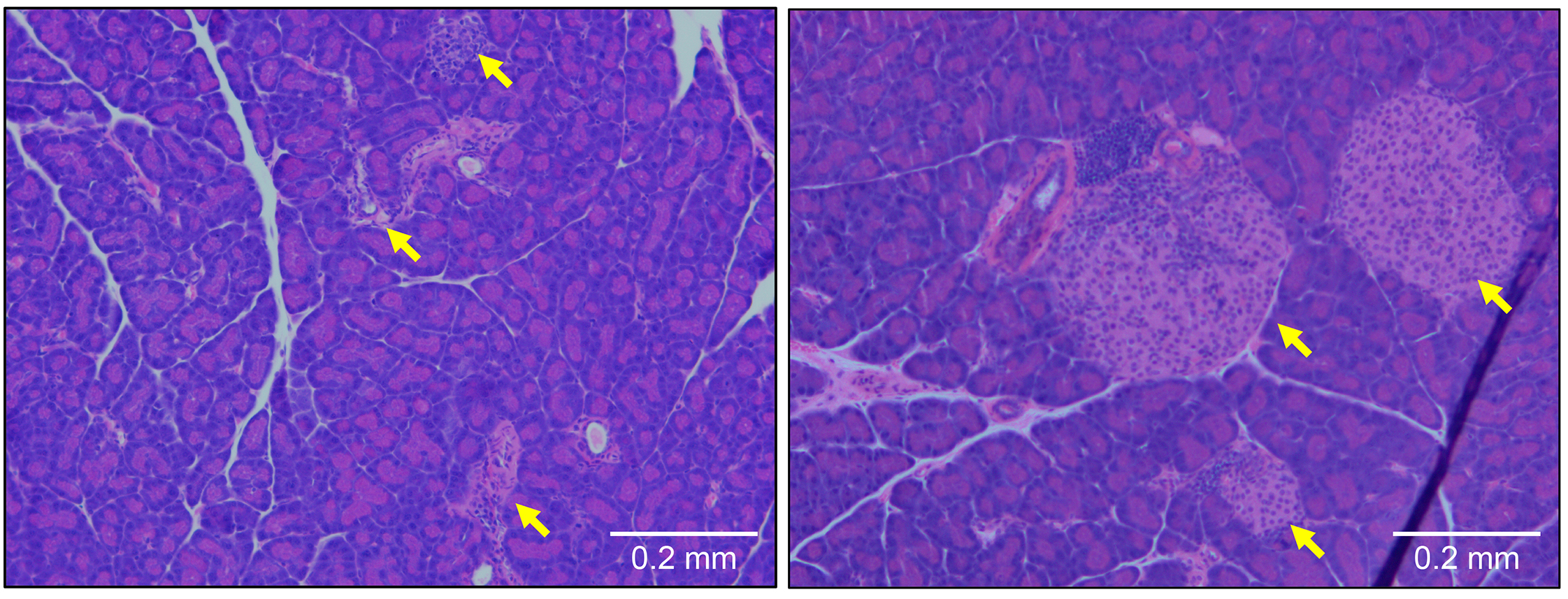Researchers at the University of Utah School of Medicine have identified a new therapeutic target to treat patients with type 1 diabetes. The study, which will be published December 9 in the Journal of Experimental Medicine (JEM), reveals that inhibiting a protein called OCA-B protects mice from type 1 diabetes by limiting the activity of immune cells that would otherwise destroy the pancreas’ insulin-producing β cells.
Type 1 diabetes is an autoimmune disease in which the body’s immune system mistakenly attacks pancreatic β cells, cutting off the production of insulin. Patients require life-long insulin therapy to maintain appropriate blood glucose levels. At present, there are no treatments that can prevent the immune system from targeting β cells while preserving its ability to fight infection.
White blood cells called T cells can recognize specific molecules produced by invading bacteria and viruses. When T cells encounter these molecules, known as antigens, they turn on hundreds of genes that allow them to fight the infection. A protein called OCA-B binds to many of these genes and helps ensure that they can easily be reactivated if the T cells reencounter the same antigens at a later date.
In many autoimmune diseases, T cells mistakenly recognize and respond to antigens produced by normal, healthy cells. “Repeated antigen exposure is a common property of autoimmune responses,” explains Dean Tantin, a professor in the Department of Pathology at the University of Utah School of Medicine and a member of the Huntsman Cancer Institute. “We therefore hypothesized that targeting OCA-B would inhibit autoreactive, diabetogenic T cell responses.”
In the new study, Tantin and colleagues found that mice prone to developing type 1 diabetes were protected from the disease if they lacked OCA-B. Potentially autoreactive cytotoxic T cells—which can directly target and kill pancreatic β cells—remained inactive and did not accumulate in the pancreas. Potentially autoreactive helper T cells—which can recruit other immune cells to induce a damaging inflammatory response—accumulated in the pancreas but remained in a non-responsive state.
OCA-B regulates the activity of T cell genes by recruiting an enzyme called Jmjd1a to chemically modify the surrounding chromosomal DNA. Tantin and colleagues designed a small peptide capable of inhibiting the association of OCA-B with Jmjd1a and preventing the reactivation of isolated T cells in the lab. Injecting prediabetic mice with this peptide reduced the activity of autoreactive T cells, lowered pancreatic inflammation, and restored blood glucose levels to normal.
“While the peptide is unlikely to be used in a clinical setting, it offers a proof-of-principle for OCA-B as a therapeutic target for type 1 diabetes, and can be used as a tool for the further development of therapeutics,” Tantin says.
Kim et al., 2020. J. Exp. Med. https://rupress.org/jem/article-lookup/doi/10.1084/jem.20200533?PR
# # #
About the Journal of Experimental Medicine
The Journal of Experimental Medicine (JEM) features peer-reviewed research on immunology, cancer biology, stem cell biology, microbial pathogenesis, vascular biology, and neurobiology. All editorial decisions are made by research-active scientists in conjunction with in-house scientific editors. JEM makes all of its content free online no later than six months after publication. Established in 1896, JEM is published by Rockefeller University Press. For more information, visit jem.org.
Visit our Newsroom, and sign up for a weekly preview of articles to be published. Embargoed media alerts are for journalists only.
Follow JEM on Twitter at @JExpMed and @RockUPress.



